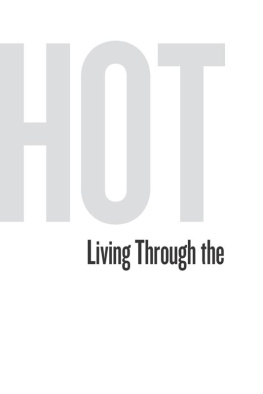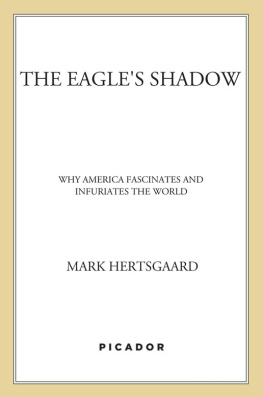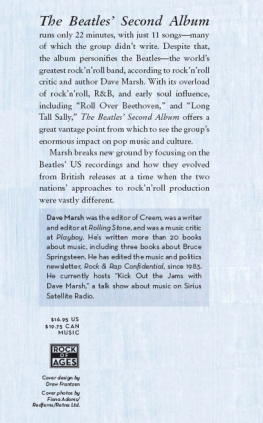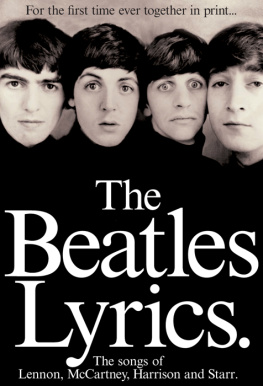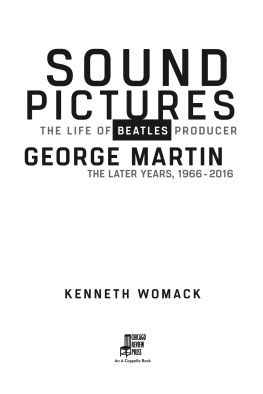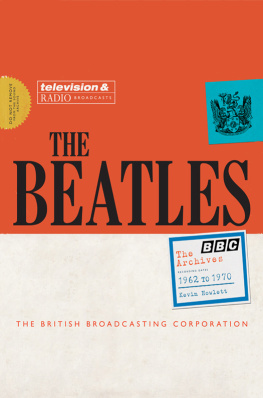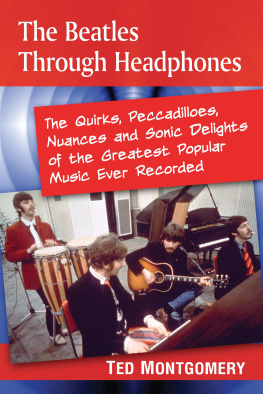A Note to the Reader
This book begins from the conviction that what matters most about the Beatles is their art. In the 1960s, John Lennon, Paul McCartney, George Harrison, and Ringo Starr affected everything from haircuts and fashion to the political and spiritual beliefs of a generation, even as their colorful private lives became a subject of endless media fascination. But in the long run it is the music, not the personal behavior of the four young men who produced it, that makes the Beatles important. This book offers a biography of that music, a brief account of how it was created, how it evolved over time, what the Beatles said and did inside the studio while recording it, which parts of which songs bear special listening, and what the Beatles themselves thought about what they had wrought. Although no artist creates in a vacuum, this book discusses the Beatles personal backgrounds and such related topics as the role of their producer, George Martin, mainly insofar as they shed light on the music itself.
Besides the Beatles commercially released song catalogue, my primary source materials for this book have been the rough drafts of the completed songs, as found in the Beatles archives at Abbey Road Studios in London and on bootleg recordings. I have also made cautious use of the public record on the Beatles. Cautious, because one simply cannot trust that the facts in most books about the Beatles are anything more than speculation, hearsay, or opinion. The daily media reporting about the Beatles over the years was often careless or simpleminded. Book authors then compounded the confusion by making vast deductive leaps that they presented as truth, or by using technically factual evidence in selective ways, or by surmising what a given person, usually one of the Beatles, must have thought in a situation and then putting those words in his mouth. Authors rarely bothered to document their conclusions; very few books on the Beatles contain a list of checkable citations in support of their claims.
In addition to sloppy journalism, there is the unreliability of human memory. During an interview at his AIR Studios building in London in 1993, George Martin told me about a disagreement that he and Paul McCartney had recently had about a trivial factwho thought of a line, or a word, from a songand I said it was Ringo who said it, and Paul said no, it was George who said it. We looked at each other and Paul said, I know it was George. I said, Paul, I know it was Ringo. And we grinned at one another, and Paul said, You know now why history is bunk. If we cant get it right, who can?
No one can get everything right, but I have tried in these pages to be as scrupulous with evidence and its interpretation as possible. The sources and reasoning that support all factual statements can be found in the Notes section at the back of the book, along with extra detail and recommendations for further reading. Here I will simply note that the text is based mainly on first-person statements by named sources whenever possible, by the Beatles themselves. It is not possible to write a book of texture and insight without the authors venturing a certain number of his own interpretations and occasionally even informed speculations, but these are usually apparent from the context and, if not, are identified as such in the Notes.
Writing about music is like talking about fucking, John Lennon once complained. Who wants to talk about it? Lennon has a point, except that talking about it doesnt preclude doing it, and perhaps the greater ones knowledge, the greater ones enjoyment. This book is written in that spirit. It attempts to set the record straight (or as straight as possible) on central issues in the Beatles work and lives. I have tried to achieve an organic connection between the chapters that explicate the music and those treating related topics so that over the course of the narrative the two spiral together like a vine around a sapling. American readers in particular should be aware that the music is discussed in the order in which the Beatles originally recorded and issued it; that is, according to the date of its release in Great Britain. In the United States, at least until the Sgt Peppers Lonely Hearts Club Band album of 1967, record company caprice and greed resulted in albums that the Beatles did not oversee (and in fact detested) and that did not reflect their musical development. A full discography is provided at the back of the book. Finally, feel free to read with the music on. A principal aim of this book is to encourage readers to listen to the Beatles music for themselves separate from the mythand to develop their own views accordingly.
And now, to paraphrase the bards themselves, I hope you will enjoy the show.
ACKNOWLEDGMENT
The author and publishers wish to acknowledge Ray Colemans book, Lennon: The Definitive Biography, published by Pan, as a major source for the interview material and other information quoted in this book.
Preface
Music is everybodys possession, John Lennon said not long before his death. Its only publishers who think they own it.
A spectacular case in point are four hundred hours of studio recordings that Lennon and his fellow Beatles made between 1962 and 1970. In volume, these recordings dwarf the ten and a half hours of music found on the bands fourteen albums and twenty-two singles. As history, they document the Beatles studio output throughout the era when they were revolutionizing popular music. Yet these recordings were kept locked away for more than a quarter of a century while lawsuitsboth among the Beatles themselves and against their record company, EMIdetermined who owned what rights to the overall Beatles catalogue. All you need is love, indeed.
I write, I should say, as someone who, before beginning this book, was twice lucky enough to hear some of these remarkable recordings inside Abbey Road Studios in London. On November 20, 1995, nine months after the hardback edition of this book was first published, a tiny sample of the Abbey Road archival material was finally released to the world at large as Volume I of the Beatles much-celebrated Anthology project.
Contrary to many media reports, the Anthology project was not a Beatles reunion. With Lennon dead, a reunion was impossible, as McCartney, Harrison and Starr appreciated better than anyone. But the Anthology was a kind of summing up, an effort on the part of the three surviving Beatles to reclaim the bands legacy and have their collective say to history. For more than thirty years, the Beatles had listened while journalists, fans and other outsiders earnestly expounded on what their music meant and how their lives were lived. Often these pronouncements were little more than misinformed gossip, fiction and speculation. (Indeed, the sloppy, undocumented and sensationalistic nature of most books about the Beatles was a large part of the reason I decided to write this book.) Now, the Beatles were turning the tables. At last they would tell us, in unison, what their lives as Beatles were really like and how it felt to create some of the most popular and accomplished music of our century. Whats more, they would open the Abbey Road archives and release some 125 recordings that had never before been heard by the general public.
All this shaped up as an event of major historical importance, and I looked forward to it as eagerly as anyone. Although I had listened to some fifty hours of archive tapes inside Abbey Road, most of that had been John Lennons solo work.
I had supplemented my access to these official tapes by listening to another thirty hours of so-called bootleg tapescopies of the Abbey Road tapes that circulate outside the copyright systemlent me by a private collector. Fascinating, amusing, rugged and beautiful, the Beatles unreleased outtakes had given me an invaluable glimpse inside the creative process and personal dynamics of the band, and I was sure the


